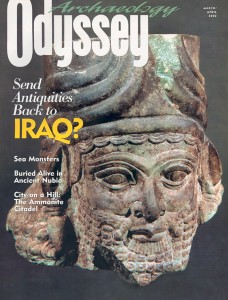The Iconography of Sea Monsters
Sidebar to: Sea Monsters and Other Ancient Beasts
Adrienne Mayor demonstrates that at least one Greek monster was conjured up from the fossil bones of an extinct creature. Far and away, however, most Greek monsters began their life in folktale or were borrowed from barbarian (that is, non-Greek) peoples.
We know of the earliest monsters from storytellers and poets, not artists. Only after the eighth century B.C. did artists begin depicting monsters killed by mythical heroes. These painters and sculptors were obliged to invent images for monsters that had hitherto been just names, and whose appearance had never been described in any detail. Greek ingenuity in devising shapes for the monsters of their myths is nowhere better demonstrated than in their representations of the sea monster, or ketos, which from an early date appeared in stories involving heroes rescuing princesses, such as the legend of the Monster of Troy—though the sea monster must also have been a popular figure in tales told by mariners sailing the Mediterranean.
The earliest representations show the sea monster (or monster-like deity) with lion forelegs, a fish tail and sometimes multiple heads. The sea-nymph Thetis, mother of Achilles, was often depicted attended by such a lion-fish, especially when shown wrestling with Peleus, her future husband. An example of the lion-fish also appears on the sixth-century B.C. vase shown at the end of the main article, which shows the Monster of Joppa (modern Jaffa, near Tel Aviv) being killed by Perseus for menacing the princess Andromeda.
Already a library member? Log in here.
Institution user? Log in with your IP address.

